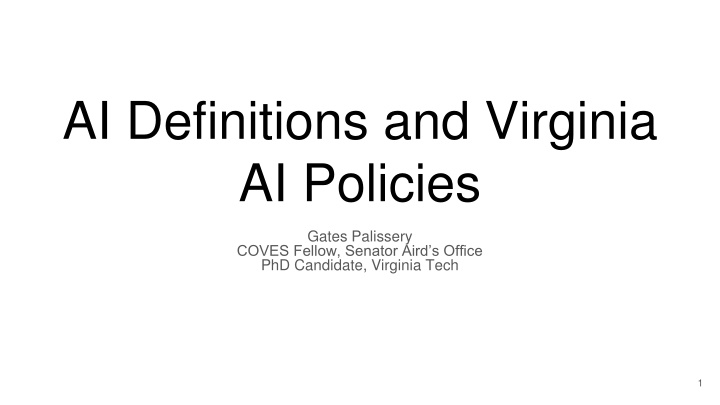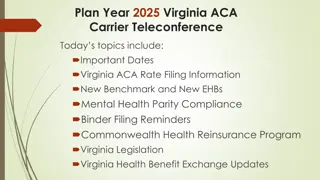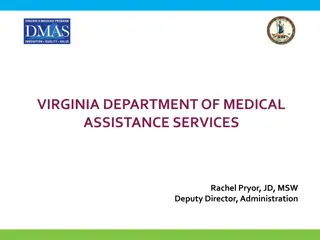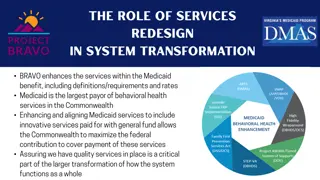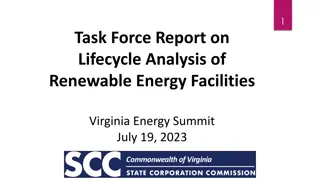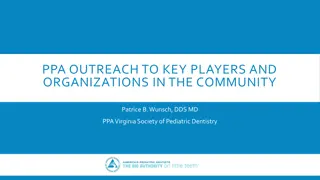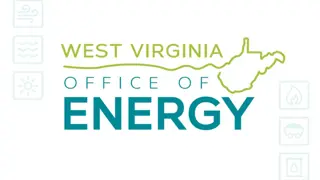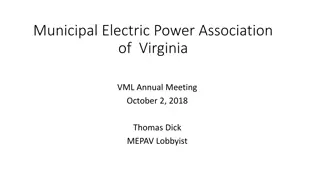Overview of AI Definitions and Virginia AI Policies
The content discusses the lack of standardized definitions for artificial intelligence at federal, state, and international levels, highlighting definitions in Virginia and at the federal level by entities like NIST, Congress, and Executive Orders. It also touches on the European Union's approach to defining AI and stresses the importance of having a clear definition. Additionally, it mentions the current Virginia AI policies.
Download Presentation

Please find below an Image/Link to download the presentation.
The content on the website is provided AS IS for your information and personal use only. It may not be sold, licensed, or shared on other websites without obtaining consent from the author.If you encounter any issues during the download, it is possible that the publisher has removed the file from their server.
You are allowed to download the files provided on this website for personal or commercial use, subject to the condition that they are used lawfully. All files are the property of their respective owners.
The content on the website is provided AS IS for your information and personal use only. It may not be sold, licensed, or shared on other websites without obtaining consent from the author.
E N D
Presentation Transcript
AI Definitions and Virginia AI Policies Gates Palissery COVES Fellow, Senator Aird s Office PhD Candidate, Virginia Tech 1
There is no accepted/standard definition for artificial intelligence on the federal, state, or international level 2
Virginia definition of AI: VITA 3 VITA Glossary
Federal definitions of AI: National Institute of Standards and Technology National Institute of Standards and Technology (NIST) AI Risk Management Framework (AI RMF) (2023) 4
Federal definitions of AI: Congress, Office of Management and Budget John S. McCain National Defense Authorization Act for Fiscal Year 2019 5
Federal definitions of AI: Executive Orders 6 15 USC 9401(3); Executive Order 14110 (2023)
European Union: Current definition 7 EU Artificial Intelligence Act (2024)
European Union: Past definitions Additional definitions available in the European Parliament's Science and Technology Options Assessment AI Definitions & Glossary (2022) European Commission s High-Level Expert Group on AI (2018) European Parliamentary Research Service Study (2020) 8
Importance of a clear definition of AI Too narrow: could exclude technologies that should be included Ex. Excluding Generative AI or recidivism tools/algorithms Too broad: could include technologies that should not be included Ex. Including tools like Grammarly and email spam filters 9
Executive Branch: Executive Order 30 (Jan 2024) Directs VITA to publish AI Policy Standards including Guiding principles for ethical AI use Parameters for determining business case use Creating a mandatory approval process and mandatory disclaimers Establishing measures to mitigate third party risks and ensure citizen data is protected Specifies what AI VITA s standards apply to Separate guidelines for AI use in education and law enforcement Establishes AI Task Force to provide executive branch agencies ongoing recommendations about the implementation of standards and AI pilot programs on a biannual basis 11 Executive Order 30 (2024)
VITA: 6 Standard Utilization of AI in the Commonwealth Policy (June 2024) Ethical AI use: ensuring AI is trusted, safe, and secure and also acting in a responsible, ethical, and transparent way Business case use: AI should only be deployed if it meets specific requirements by VITA Mandatory approval process: agencies wishing to use AI must register it and have it approved Considerations for approval include: whether the AI shows no discrimination, has no disparate impacts on groups, potential risks and mitigation steps, and cost impact analyses 12 VITA Policy Standards
VITA: 6 Standard Utilization of AI in the Commonwealth Policy (June 2024) Mandatory disclaimers: AI use in decision making must be disclosed for transparency. Mitigating third party risks: involved third parties must be reviewed and thoroughly vetted to mitigate risks including potential data breaches, unauthorized access, or misuse of personal information. Protecting citizens data: Protecting citizen data and privacy must be a priority. VITA has a set of requirements to accomplish this priority. 13 VITA Policy Standards
VITA: AI Enterprise Solutions Architecture (Nov 2023) The ESA exists to help Commonwealth agencies and workers use AI while creating public trust by ensuring no harm comes to citizens as a result. 6 objectives Improving government operations Ensuring AI is employed safely/not causing harm Requiring human oversight to detect and mitigate the risks of discrimination and bias Respecting data privacy and security Promoting transparency Ensuring AI is a sustainable enhancement that does not result in the loss of essential skills. Establishes specific requirements AI systems must meet, including NIST AI RMF characteristics 14 VITA ESA
Available 1-pagers Virginia & VITA current policies White House Blueprint for an AI Bill of Rights NIST AI Risk Management Framework (NIST AI RMF) Executive Order 14110 (2023) OBM Policy Memo on Advancing Governance, Innovation, and Risk Management (2024) Maryland data privacy/protection law (SB541) Colorado consumer protection law (SB205) Maryland Executive Order forming the Governor s AI Subcabinet Bipartisan US Senate AI Working Group Roadmap for AI Policy (Full roadmap here) 15
